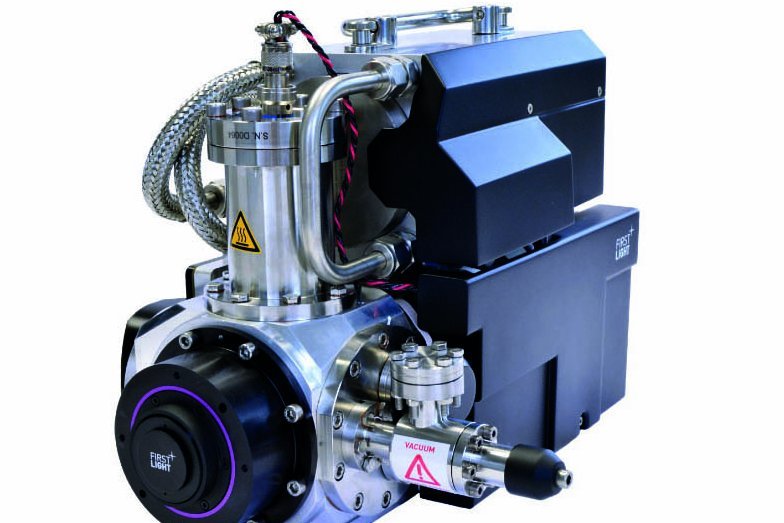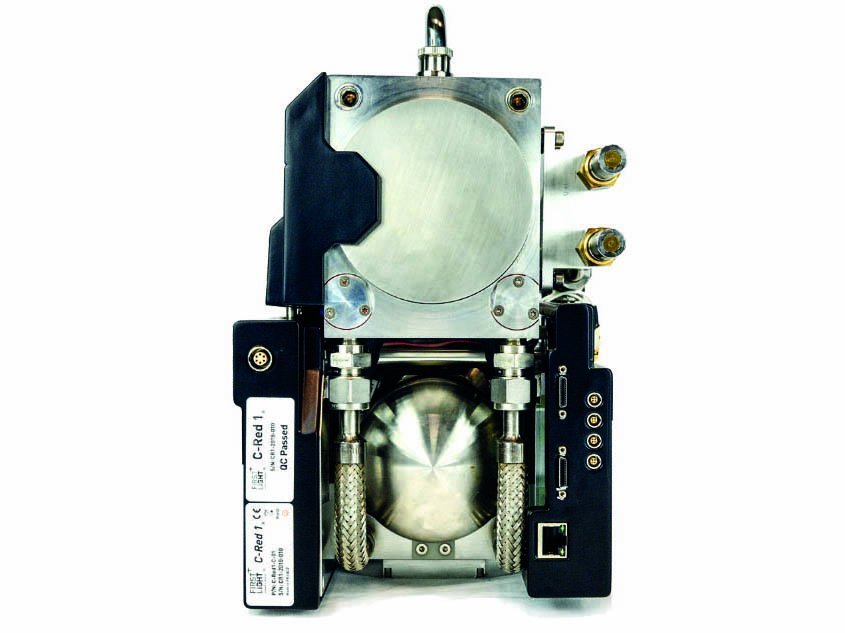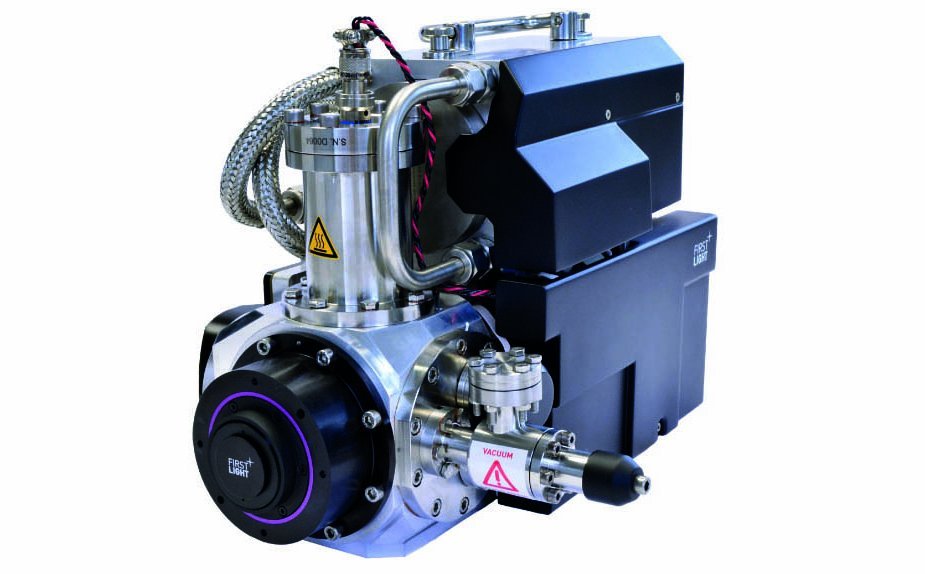Record high-speed IR recordings with extremely low noise
The discovery of electron-initiated avalanche photodiodes (e-APD) using mercury-cadmium-telluride (MCT) semiconductor materials enabled a major breakthrough in SWIR imaging.
C-RED One uses a unique 320 x 256 pixel HgCdTe e-APD array with a pixel pitch of 24 µm. The sensor enables sub-electron readout noise and uses the noise-free multiplication gain of the e-APD and the non-destructive readout capability. The system is able to read out several regions of interest (ROI). This enables a faster frame rate (10 KHz) with unprecedented sub-electron readout noise. The sensor is cooled down to a cryogenic temperature (80 K) via an integrated and reliable pulse tube. Several readout modes (global reset, rolling reset, single read, CDS or non-destructive reads) are possible.
C-RED One opens up completely new possibilities in terms of sensitivity and speed in the field of scientific SWIR cameras.
Technical specification
Models | C-RED One cooled SWIR camera |
Data sheet | C-RED One |
Weight | 19,4 kg |
Dimensions | 238 × 180 × 365 mm without lens |
Lens thread | T-Mount |
Interfaces | CameraLink Full |
Pixel Pitch | 24 μm |
Pixelarray | 320 x 256 |
Spectral sensitivity |
K-band configuration (0.8 - 2.43 μm) with f / 20 baffle |
| > 60 % von 1,1 µm bis 2,4 µm (J, H, K) |
Read rate (full frame) | 3500 fps |
Noise (at 3500 fps and ~ 50 gain with a view to blackbody emitters at 80 k) | < 1 electrons |
Dark current (with a view to blackbody emitters at 80 k and e-APD gain x10) | 80 e-/p/s |
Operating temperature of the detector (no LN2) | 90 k |
Software | First Light Vision, SDK (C, C++, Python) / LabVIEW / μManager / MatLab |


